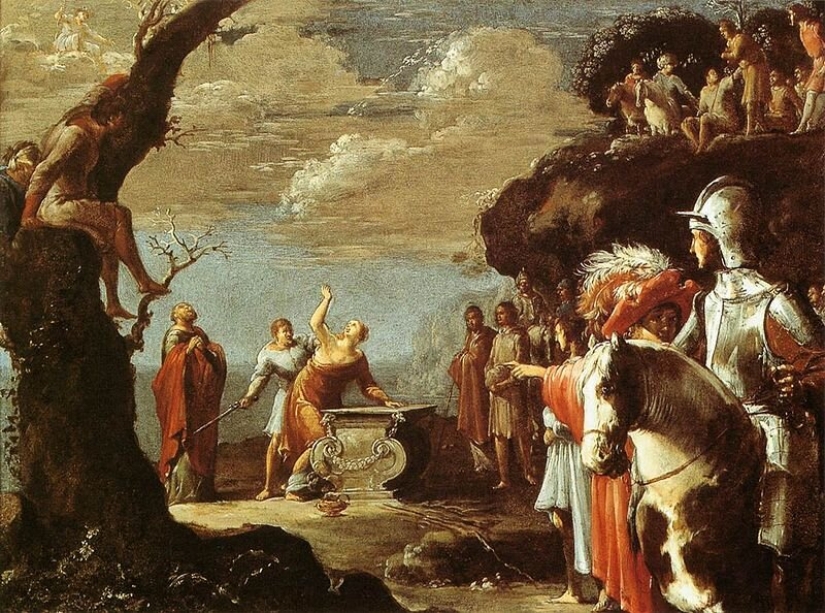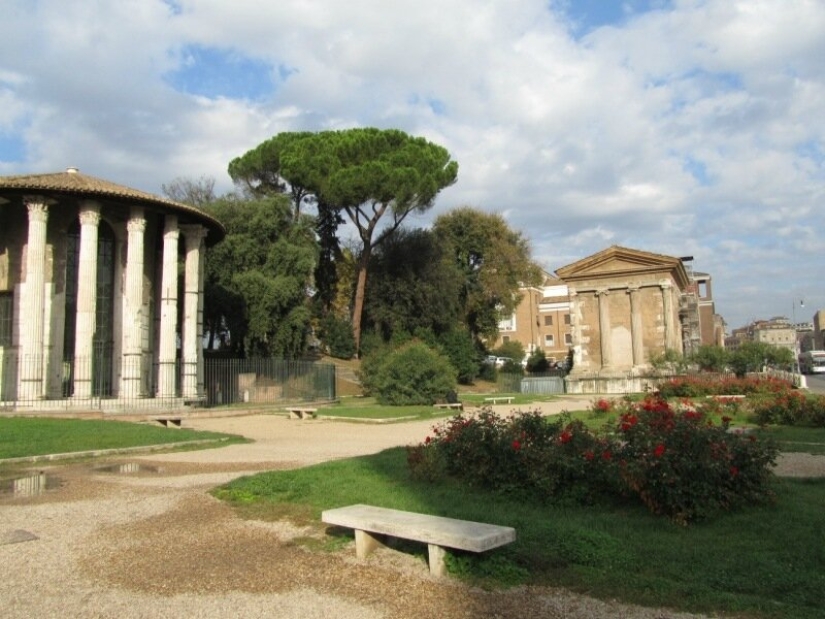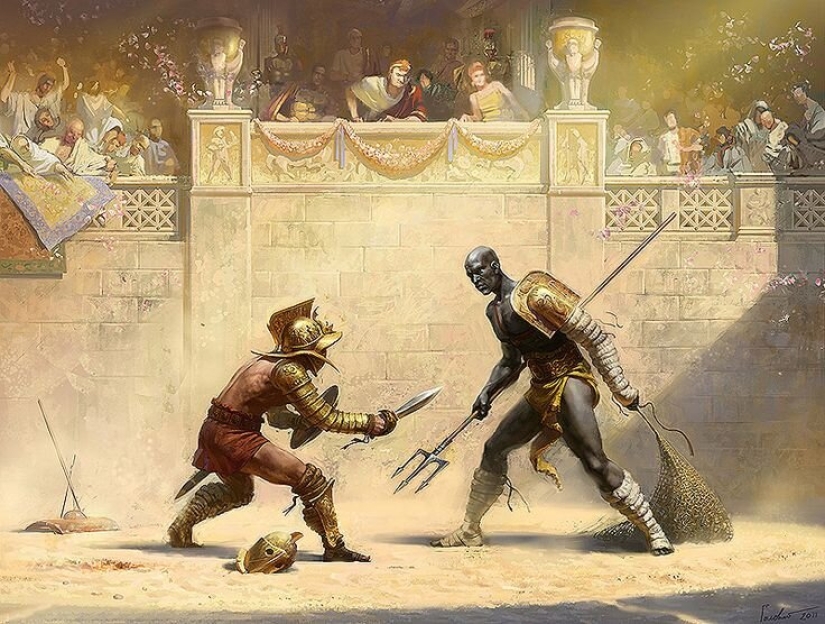Human Sacrifice in Ancient Rome - Who and Why They Sacrificed
Categories: Culture | History | Nations
By Pictolic https://pictolic.com/article/human-sacrifice-in-ancient-rome-who-and-why-they-sacrificed.htmlIn history books, novels and films, the ancient Romans are portrayed as a peculiar, but quite civilized people. Therefore, references to human sacrifices in Ancient Rome often cause skepticism. But such bloody rituals were actually practiced, and throughout the history of this state.

Rome itself, according to legend, was built on the site of a ritual murder. The city's founders, Romulus and Remus, were constantly arguing over where the new city would be located, what it would be like, and who would rule it. To resolve the dispute, they turned to the gods: whoever saw more vultures would be the winner.

Romulus saw 12 birds, while his brother saw only 6. The conflict seemed to be resolved, and Romulus began digging a ditch and laying the foundations of the city walls. "Then let anyone who jumps over my walls perish!" he said. Remus did not listen and jumped over the masonry he had started. His brother kept his word and killed him. Perhaps this legend is connected with the ritual of "building sacrifice" found in many nations.
ary Numa Pompilius, Romulus' successor, immediately after ascending to the throne banned human sacrifices. They say he even argued about it with Jupiter himself and was so stubborn that he won the argument. Instead of people, they began to sacrifice onions, fish, and cut hair. Officially, the Romans are considered to have abandoned human sacrifices. But in reality, they continued to kill for their gods, sometimes resorting to tricks.

Once a year, Rome celebrated Saturnalia. During these days, slaves became masters, and their masters served them. Debtors repaid their debts, and those who could not, risked becoming victims of public execution. They could be stabbed on the altar of the god Saturn, presenting it as an act of justice. Later, such debtors were simply given into slavery to creditors.
At one time, the townspeople elected a "King of Saturnalia." This man became the ruler of the city for the duration of the festivities. He bathed in luxury and wore the clothes of a ruler. But at the end of the festivities, he was killed. Later, this bloody ritual was abandoned, and the "king" was left alive.
The Romans often used substitute sacrifices. For example, wax figures of people painted with ochre were brought to Jupiter. But the most gloomy rituals were in honor of the goddess-patron of ancestors and the hearth, Mania. Despite her "domestic" status, she was quite bloodthirsty. Once a year, for each adult member of the family, the goddess was supposed to give the head of a child. True, the heads were made of wool.

In the 6th century BC, the usurping emperor Tarquinius Superbus ordered the sacrifice of living children to Manius. But this did not last long - the Romans overthrew and killed him. Tarquinius' bloodthirstiness was explained by his origins: he was an Etruscan, and this people was considered cruel.
There is also a ritual of throwing effigies of tied people into the Tiber. This happened on May 14 and 15. The straw figures symbolized old people. Ovid wrote: "Young people threw old people off the bridges so that only their own voices would be heard at the elections." He also mentioned that Hercules abolished the ritual, considering it absurd and offensive. Perhaps this ritual had real roots - drowning old people, but history is silent about this.
Sometimes the Romans sacrificed themselves. This is what the consul Publius Decius Mus did, and then his son and grandson. Leading an army against the Latins, who demanded equal rights, he had a dream on the eve of the battle. The gods promised victory if he sacrificed himself.

During the battle, Publius Decius Mus charged into the enemy on horseback and was stabbed to death. His soldiers did not flinch at the sight of their commander's death - on the contrary, they were inspired and rushed into the attack, defeating the enemy. After all, everyone knew about the prophecy, and it was this that gave them strength. Later, his son did the same in the battle with the Etruscans, and then his grandson, fighting the Epirus king Pyrrhus.
In the early history of Rome, there was a rite of "sacred spring." When the city was in danger, some citizens vowed to sacrifice their children if all went well. At first, they kept these vows, but later they began to look for ways to get around them.

During the war with Carthage, when Hannibal threatened to take Rome, the inhabitants vowed to hold a "sacred spring". True, this time they decided not to kill their children, but to exile them when they came of age. But real sacrifices had to be made. When Hannibal stood at the city walls, two Gaulish prisoners and two Greek slaves were buried alive in the Bull Market. Titus Livy wrote about this, emphasizing the exceptional nature of such a case for Rome:

It was also customary to bury alive the Vestals - priestesses who had taken a vow of chastity and failed to keep it. But this was done in the opinion of the townspeople in a completely humane manner. Plutarch described the ceremony as follows:
The entrance to this dugout was filled in, and the vestal died slowly and painfully from suffocation, hunger or thirst.
In 97 BC, the Roman Senate categorically banned human sacrifice. But the Romans found a way around this ban, and people continued to die. In Latin, the word for "death penalty" (supplicium) also meant "sacrifice," so any execution could be considered a sacrifice to the gods.

Criminals were often executed in the arena, by being thrown to wild animals, burned on crosses, or killed during theatrical performances. Gladiatorial fights were also sacrifices, and the most massive in the history of Rome. Although the purpose of the fights was more political - to keep the plebs in obedience and increase the popularity of sponsors - they were formally dedicated to the gods.
The Romans borrowed gladiatorial fights from the Etruscans, where they were part of the funeral ceremony. But even on ordinary days, the inhabitants of Rome were not averse to watching a bloody fight. A fresco has been preserved, where a man with a club and a bag on his head fights a dog. His hands are tied with a rope, the end of which is held by a bearded spectator.

The Romans adopted many things from the Etruscans, including gladiatorial combat. Initially, they were held as memorial battles and dedicated to the dead. The first such fight took place in 254 BC at the Forum Boarium. The sons of Decimus Junius Brutus Pera organized a fight of three pairs of gladiators in memory of their father. The next fight was held in honor of Marcus Aemilius Lepidus at the Forum, and 44 fighters participated in it.
Recent articles

On the eve of the New Year, a magical atmosphere reigns in every house — everything is hung with shiny tinsel, there is an ...

Motherhood significantly changes a woman's body. But there are more profound changes affecting the nature and Outlook. Reflected in ...

Some people have genetic abnormalities that make their appearance unique. These body features are usually inherited from parents, ...